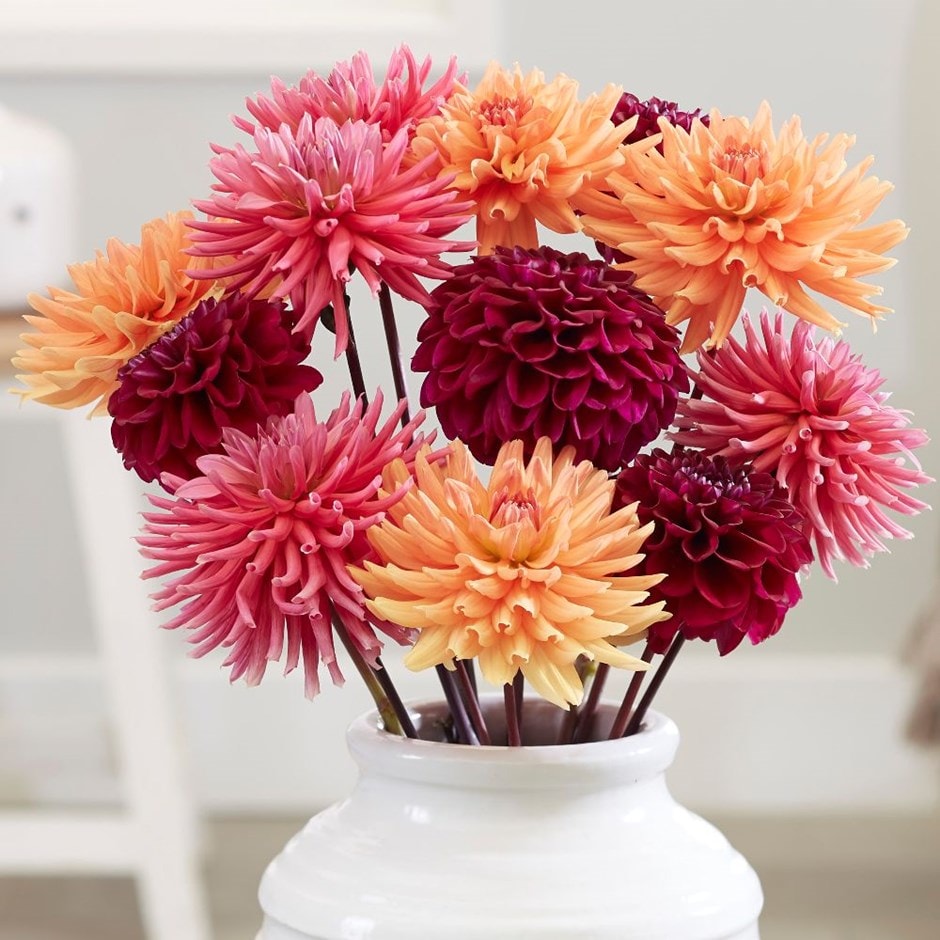Strawberry marmalade dahlia collection
dahlia collection
- Position: Full sun
- Soil: Moderately fertile, moist, well-drained soil
- Rate of growth: Average
- Flowering period: July to September
- Hardiness: Half hardy (may need winter protection)
The rich, contrasting tones of these stunning dahlias will add a touch of opulence and drama to the border and cut-flower vase. Traditional cottage garden favourites, their showy flowerheads will put on a magnificent display, usually flowering prolifically for a long period from midsummer, particularly if they are deadheaded regularly. A lively combination for late summer pizazz.
In each collection you will receive one tuber of each of the following cultivars:
- Dahlia 'Jowey Marilyn': Forming spherical burgundy-coloured heads, which top dark-stained stems over several months from midsummer, the opulent colouring of this dahlia makes it very easy to place in the border. Use it to add body to softer shades of pink and purple, or team it with acid green for a stunning contrast. Grows to 1m.
- Dahlia 'City of Leiden': Apricot-pink, cactus flowerheads top dark stems, which rise above bronze-flushed foliage, putting on a great show from midsummer onwards. A reliable performer, it is relatively compact, so can also be grown in pots on the patio. Good for cutting too. Grows to 60cm.
- Dahlia 'Glorie van Noordwijk': Magnificent flowerheads consisting of a mass of warm, copper-orange petals, emerge from rounded buds over several months from midsummer. Each head grows to around 20cm across, so they put on a really dazzling display - and they look sublime when teamed with rich plums, velvety reds and golden tones. Grows to 90cm.
- Humans/Pets: Ornamental bulbs - not to be eaten

